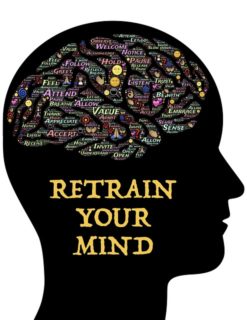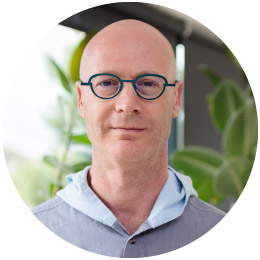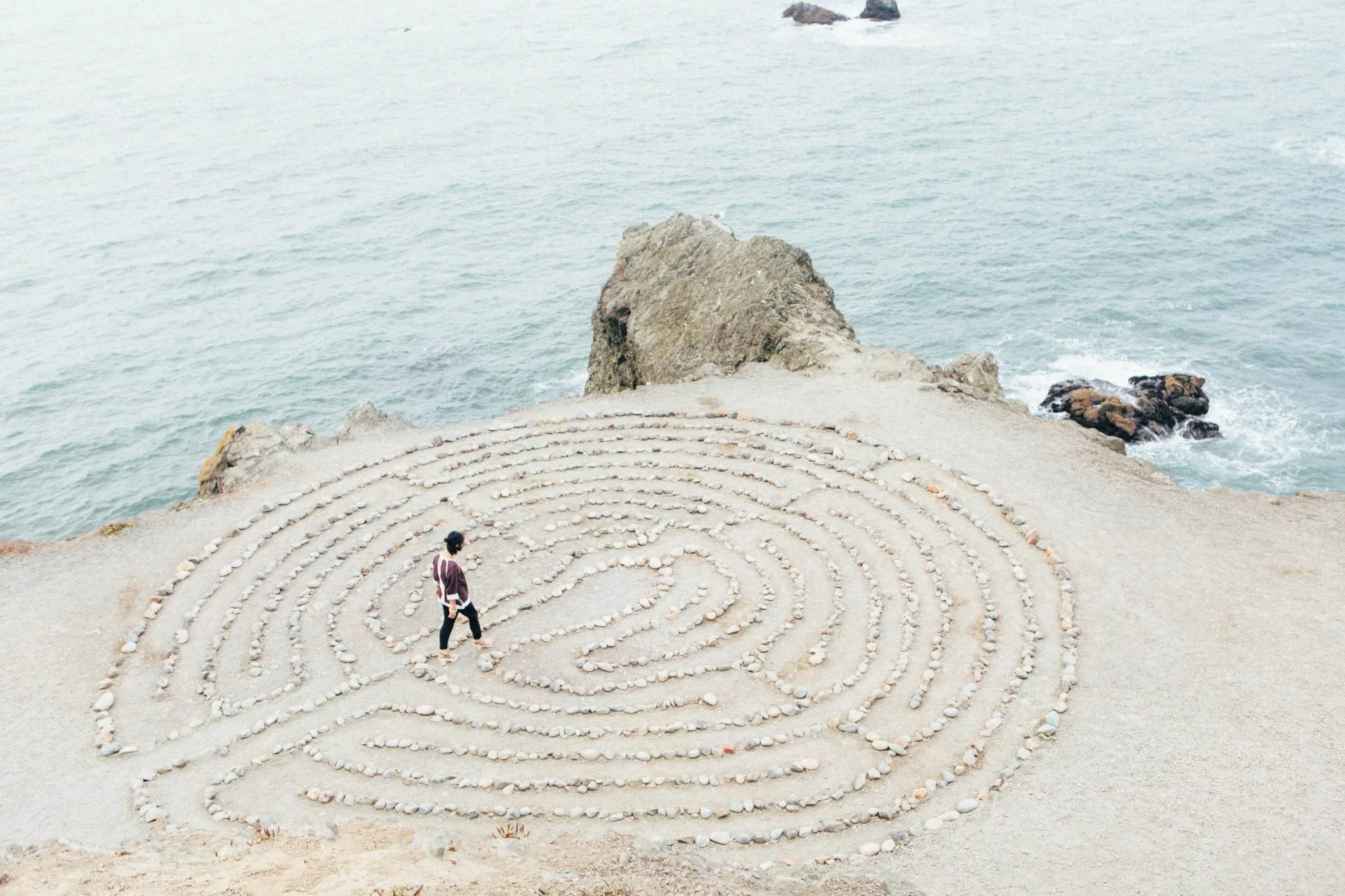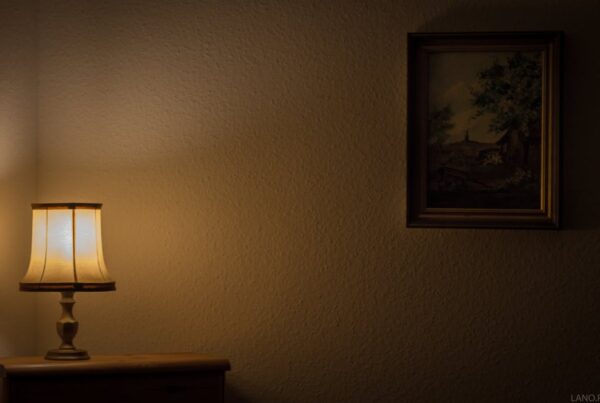Gisèle Wertheim Aymés speaks to Dr. Simon Whitesman (MBChB) about why mindfulness is medicine. Dr. Whitesman is a practitioner of medical psychotherapy at Christiaan Barnard Memorial Hospital in Cape Town and chairman of the Institute of Mindfulness.
Q: How did a medical doctor become chairman of the Institute of Mindfulness?
A: I always wanted to be a doctor. However, when I became one, the experience was nothing that I had imagined. There was a strong missing element. Then a colleague suggested I start meditating. I had heard of TM, so I went and did TM training. This helped me become very disciplined, and it made a relatively quick and deep impact on my physical well-being. I had suffered from tension headaches and now found relief. And it was this that started my scientific interest in meditation.
I began immersing myself in information, in the mind-body connection.
When I read Quantum Healing by Deepak Chopra, I experienced an epiphany. It was like walking into a room I had been in and recognizing everything.
It resonated with me. This idea that raising consciousness is the basis for all healing – like a key fitting into a lock.
And from there I began an exploration of this insight. I have walked many paths as a psychotherapist. From mind-body connection and Buddhist contemplative therapies to more contemporary approaches to mindfulness. This is where I have really found more meaning now – in a more contemporary approach to mindfulness.
Q: On this journey, how did you marry your training in conventional medicine and your newfound knowledge?
A: I discovered it was about my own healing – a parallel process while wanting to find expression as a clinician and a doctor. And then recognizing a symmetry on the inside that was compelling for me, in terms of my own path and personal growth.
Then, through Jon Kabat-Zinn’s work, I was exposed to mindfulness, which is not the same as TM.
Jon Kabat-Zinn is an American professor emeritus of medicine, and creator of the Stress Reduction Clinic and the Center for Mindfulness in Medicine, Health Care and Society at the University of Massachusetts Medical School, in the US. Kabat-Zinn was a student of Zen Buddhist teachers such as Philip Kapleau, Thich Nhat Hanh and Seung Sahn, and a founding member of the Cambridge Zen Center. His practice of yoga and studies with Buddhist teachers led him to integrate their teachings with scientific findings. He teaches mindfulness, which he says can help people cope with stress, anxiety, pain, and illness. The stress-reduction program created by Kabat-Zinn, mindfulness-based stress reduction (MBSR), is offered by medical centers, hospitals, and health-maintenance organizations.
Q: What are the differences between TM and mindfulness?
A: The original roots of mindfulness are part of a set of teachings from Buddha 2 500 years ago. Buddha was a human who woke up to who he was and developed a way of teaching others to help them wake up. Central to this path was mindfulness. There were obviously many other aspects, but mindfulness was central.

Kabat-Zinn understood that there are so many people who could benefit from mindfulness, but who were not necessarily interested in Buddhist teachings. He developed mindfulness around keeping the essential qualities of Buddhism, but without the beliefs. You could say it is Buddhism without “the belief”. It’s a contemporary re-contextualization of ancient wisdom and tradition. This meant that if you were a Catholic priest, you could benefit from mindfulness; it didn’t conflict with your own set of beliefs. This was a subtle, but very important shift.
Q: What does mindfulness bring to the world today?
A: Mindfulness enables you to be more compassionate, more present, less reactive. It’s meditation made more accessible.
Unfortunately, our default pattern is to be mindless, not mindful.
Kabat-Zinn first offered it in a contemporary tertiary teaching hospital in Worcester, Massachusetts. He saw it could be a benefit for so many – those suffering from chronic pain syndrome, the people who fall through the cracks. He told colleagues to send them to him. Kabat-Zinn taught these patients how to turn inward, to find a new way of being in pain. From there, his work expanded into other chronic disorders.
And when you understand and experience it yourself, you are able to help others.
Medicine doesn’t want to go there. I saw that, but for me, there is a desire to bring it back to my life. For me, it is not so much about mindfulness, but more “heartfulness.”
Q: How do we integrate mindfulness into our daily lives?
A: I went to the US and started training in that approach. While I had learned the TM technique, Jon Kabat-Zinn helped to orientate me to what meditation truly is.
 What are you going to do when you finish meditation? When you finish meditating, can you make the next moment valuable, engaged, connected, awake, with a quality of curiosity, interested in your own experience? It’s valuable to meditate, but the application is deeper than sitting and closing your eyes. Dedicate time to understand your own mind. It’s a willingness to explore and be interested in your own experience.
What are you going to do when you finish meditation? When you finish meditating, can you make the next moment valuable, engaged, connected, awake, with a quality of curiosity, interested in your own experience? It’s valuable to meditate, but the application is deeper than sitting and closing your eyes. Dedicate time to understand your own mind. It’s a willingness to explore and be interested in your own experience.
The two work beautifully together.
You dedicate time to silence, to understand your own mind better. Then I also need to get up and go to the world, be present in the world. It’s always available to us. Awareness isn’t going anywhere. Awareness is now, attending to each and every moment of our lives. Then life becomes meditation.
If you do take time to be with yourself, understand your relationship between body and mind, then life becomes a meditation. It’s a radical shift in understanding, broadly and universally applicable. . Mindfulness isn’t about though; it’s prior to thought. Train yourself to be aware of the thought prior to its occurring.
Q: Isn’t this really difficult to achieve?

A: Yes, agreed. We get lost in thinking. We lose a wider presence with our bodies. Most of us are lost in thinking… the revered space between our left and right ear. And we lose our consciousness of Earth and others. You have to start with mindfulness of the body, then mindfulness of thoughts. And it becomes a trainable skill, an actual physiological skill – transforming our own awareness. Not randomly, but in service of the greater good, to reduce our own suffering, then the suffering of others. In order to experience a more meaningful existence and live life, we have to train our minds.
Most people’s minds are noisy.
When you train for the Two Oceans, you train your body extensively. You can’t run a marathon if you haven’t trained physically. People think the mind is easier. It’s not. You’re asking people to open up and be uncomfortable. The gym is not comfortable; the gym can be hard. It’s the same as training for consciousness. It isn’t easy, but it is simple.
Here and now
Mindfulness is about focusing on the present, not worrying about yesterday or tomorrow.
A cartoon shows two Buddhist monks sitting side by side. They’re deep in meditation when the younger one opens an eye and gives the older, wiser one a questioning look.
“Nothing happens next. This is it,” the older one responds.
Q: What is the pathway to mindfulness in our society?
I treat mindfulness daily in my practice, and I teach an eight-week program on mindfulness. We are training professionals in mindfulness at the Faculty of Medicine at Stellenbosch University. It’s much broader than doctors. We train the trainers through the Faculty of Medicine and Health Sciences. This is the only university in South Africa that offers this course. I also contribute towards IMEISA, a non-profit around mindfulness, to create more awareness and debunk myths around mindfulness.
Bottom line
Everyone can benefit from mindfulness. However, the only way you will know the benefit is if you practice. It will be in your own experience. However, for me, I saw my own changes: reduced reactivity and a stronger connection with myself and others, as well as everything around me. It’s the human condition to be lost in thought. We can’t connect if we’re not present. Something happens when we don’t make our mind the enemy. Be more engaged “in the moment”. It’s not an idea; it’s a truth.
This is how mindfulness can heal trauma. Read more.
Who is Dr. Simon Whitesman?
 Apart from his role as a practitioner of medical psychotherapy at Christiaan Barnard Memorial Hospital in Cape Town, Dr Simon Whitesman is the co-ordinator of the post-graduate certificate training in Mindfulness-Based Interventions at Stellenbosch University’s Faculty of Medicine and Health Sciences. He’s also director and chairperson of the Institute for Mindfulness South Africa (IMISA), and co-director of the first Mindfulness-Based Stress Reduction (MBSR) program in South Africa. He received certification as a teacher in MBSR from the University of Massachusetts Center for Mindfulness, and in psychoanalytic psychotherapy from the South African Institute for Psychotherapy.
Apart from his role as a practitioner of medical psychotherapy at Christiaan Barnard Memorial Hospital in Cape Town, Dr Simon Whitesman is the co-ordinator of the post-graduate certificate training in Mindfulness-Based Interventions at Stellenbosch University’s Faculty of Medicine and Health Sciences. He’s also director and chairperson of the Institute for Mindfulness South Africa (IMISA), and co-director of the first Mindfulness-Based Stress Reduction (MBSR) program in South Africa. He received certification as a teacher in MBSR from the University of Massachusetts Center for Mindfulness, and in psychoanalytic psychotherapy from the South African Institute for Psychotherapy.



![women [longevity live]](https://longevitylive.com/wp-content/uploads/2020/01/photo-of-women-walking-down-the-street-1116984-100x100.jpg)










